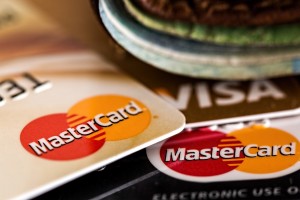In 2011, CNN reported a story about a woman who was fired for putting a hotel room movie rental in the amount of $9.95 on her business travel expense report. While this may sound extreme, her manager’s argument was that if the company allowed this, and it kept happening, then they would be sending a message that “everyone is allowed to break the law.”
Curious how your travel policy compares?
That was 2011. In 2016, we might expect that emerging technologies and better processes might have reduced the amount of money companies are losing due to travelers adding unnecessary expenses to their travel spend or even lying on their reports. Yet, according to a survey of over 1,000 business travelers by Chrome River in February of 2016, expense reporting fraud currently costs U.S. businesses more than $2.8 billion per year. While 1,000 business travelers is a relatively small sample size from which to draw this kind of a conclusion, the study effectively shows that expense reporting fraud is still happening, and it’s costing companies money.
Types of Expense Report Fraud
Employees engage in a wide variety of activities to cheat the system—most of which are considered fraud schemes. The Association of Certified Fraud Examiners (ACFE) breaks down expense reporting schemes into four categories:
- Multiple reimbursement schemes – When an employee requests to be reimbursed multiple times (likely from different individuals) for the same expense. This is most common when the employee has multiple forms of documentation that serve as proof of purchase.
- Fictitious expense schemes – When an employee completely makes up a purchase and requests to be reimbursed for that expense.
- Overstated expense schemes – When an employee inflates the actual cost of a business expense prior to requesting reimbursement.
- Mischaracterized expense schemes – When an employee attempts to receive reimbursement for a personal expense by characterizing it as a business expense.
While it is important to understand that employees are committing fraud when they engage in these “schemes,” many employees are perhaps not being as intentionally devious as the term scheme implies. Some feel they deserve a little extra money in their pockets. As Allan Bachman, then-education manager at the ACFE told CNN, “Employees are thinking, ‘They make me travel on a Saturday night, they can afford to buy me a steak for dinner.’”

The other good news is that most employees do not commit expense report fraud. According to the Chrome River survey, more than 94 percent of employees who submit business expenses claimed that they were honest when submitting their expense reports.
Despite the fact that most employees are honest, small expense report lies can add up quickly. For instance, the same Chrome River report shows that while most employees submit honestly, those who do submit fraudulent claims request reimbursement for, on average, $2,448 in false expenses. Some individuals even admit to claiming as much as $25,000 per year.
A different study, conducted in the U.K., yields different data. A survey of over 1,000 workers in the U.K. commissioned by expense management software firm Webexpenses shows that the average amount of exaggerations was just over $38 (U.S.) per worker. Yet, they note that very few employees (only 18%) have ever been caught—likely because of these small numbers. With many employees’ small overstatements not being caught, companies will continue to lose money. So, it is important to be able to detect some of the common ways that business travelers potentially exploit the system:
1. Airline travel add-ons. Air travel poses a particular challenge because it is very easy to tack on premium seat options and priority boarding fees. If employees are only asked to provide a credit card statement showing payment, or if they are booking via a company card, these kinds of add-ons may not be visible to accountants or travel managers.
2. Car mileage. A common way employees get reimbursed for more than they deserve is by claiming additional mileage when they are driving for business purposes. Related, gasoline reimbursement is a commonly exaggerated expense. In fact, the Webexpenses study shows that the top expense area employees exaggerated (at 40%) was gas. This is easy to do when employees are using cash to pay for their gas.
3. Out-of-policy spending. While many companies have specific guidelines about what they will allow employees to spend and how, some employees fail to follow these policies and occasionally manage not to get caught. For example, a traveler may try to submit a report for a $70 meal per diem when the company’s policy dictates a per diem of $50. These small differences–understandably–may go unnoticed.
4. Personal expenses. Some employees try to pass off personal expenses as business-related purchases—what the ACFE would call a mischaracterized expense scheme. Often, these expenses are for meals or drinks. While this could happen at home, if an employee uses a corporate card to cover a meal or gift for a spouse, it can also happen during business travel if an employee meets a friend in the area, takes that friend out, and covers the expenses as business-related. It becomes more difficult for accountants and travel managers to make distinctions when travelers are asked to travel on weekends, making it more tricky to discern if a purchase was related to work.
5. Out-of-pocket expenses. A common strategy for getting more money than you are owed is to over-claim on out-of-pocket expenses such as tips for hotel bellhops or cabs that only take cash. Sometimes, travelers are legitimately stuck in these situations, unable to use the company card or show proof of payment. Yet, these excuses can also be used to game the system. Some people even request a blank receipt. Also, over-claiming restaurant server tips is common. An employee might be courting clients at a fancy dinner during a business trip, and covering that meal is completely within the company’s policies. However, some employees over-claim tip amounts, and this can be difficult to prove if they say they paid in cash or if they are using an original receipt from the restaurant and write a different tip amount.
6. Double reimbursement. Falling under the category of multiple reimbursement schemes, some employees seek out more than one proof of payment for a single item and then submit these forms to different supervisors to get paid twice. This is particularly common with airline purchases and train tickets. An employee can easily submit the actual airline receipt to one individual in the company and his or her credit card statement to someone else. Depending on the size of the company and how much travel occurs at the company, some employees even get away with getting double reimbursement from the same accountant or travel manager.
7. Unused expenses. Another approach some business travelers take is to submit a request for reimbursement for an item that they may have originally purchased but then did not use. The Chrome River report suggests that this happens often when airline flights are canceled or when an employee decides not to attend a conference that she already paid for.
Want to know by how much Claire lowers your travel $$$?
Resolving Expense Report Fraud
It is important to keep in mind that not all travelers try these tricks, and their intentions are often not malicious. Sometimes, employees are trying to make their lives a little easier or use common sense. For example, the company’s preferred airline may only offer flights to a certain destination with long connection times or 2+ stops. In such a case, a traveler may book out of policy and spend a little more, but fraud is not on the traveler’s mind. Also, expense fraud tends to occur most often by those who, according to Chrome River, “an organization would typically trust the most.” In their survey, the role with the highest expense fraud rate was senior vice presidents (at 13.9%).

In short, resolving expense reporting fraud can be tricky. One approach is through technology. A variety of digital T&E management systems help hold travelers accountable for their expenses by allowing for photographs or receipts to be attached to reports and by requiring travel bookings within company policy. Companies also may need to implement a more robust audit system. Chris Rossie writes in Business Travel News that companies can target “statistically high out-of-pocket expense claims” and “implement a monthly audit system to monitor 100 percent of T&E transactions.” He suggests that employees’ behavior will change if they know they are more likely to be caught in such an audit, and this also allows accountants to monitor those who are high up in the organization, which does not always happen.
 Tracking traveler data can be helpful, too. Rossie suggests benchmarking travelers so you know “what is usual for lodging and meals by city.” This requires, Rossie claims, “cataloging all hotel stays by night and understanding the itemized expenses. Separate lodging and related taxes from other expenses at hotels, including meals and internet. If a traveler’s lodging expenses are consistently higher than their peers, you may want to ask why.” In other words, understanding what is common for your business travelers to spend in a given city, and itemizing those expenses well, will help you identify potential problems.
Tracking traveler data can be helpful, too. Rossie suggests benchmarking travelers so you know “what is usual for lodging and meals by city.” This requires, Rossie claims, “cataloging all hotel stays by night and understanding the itemized expenses. Separate lodging and related taxes from other expenses at hotels, including meals and internet. If a traveler’s lodging expenses are consistently higher than their peers, you may want to ask why.” In other words, understanding what is common for your business travelers to spend in a given city, and itemizing those expenses well, will help you identify potential problems.
Companies might also consider only reimbursing post-travel and requesting additional items of proof (such as a conference program), which could reduce issues with travelers trying to get paid for a canceled flight or a conference they did not attend. Post-travel reimbursement may also may reduce an employee’s ability to over-claim by over-estimating potential future costs.

How Travel Managers Can Resolve Expense Report Headaches
For more on how to address expense report fraud, consider some of our additional tips.
